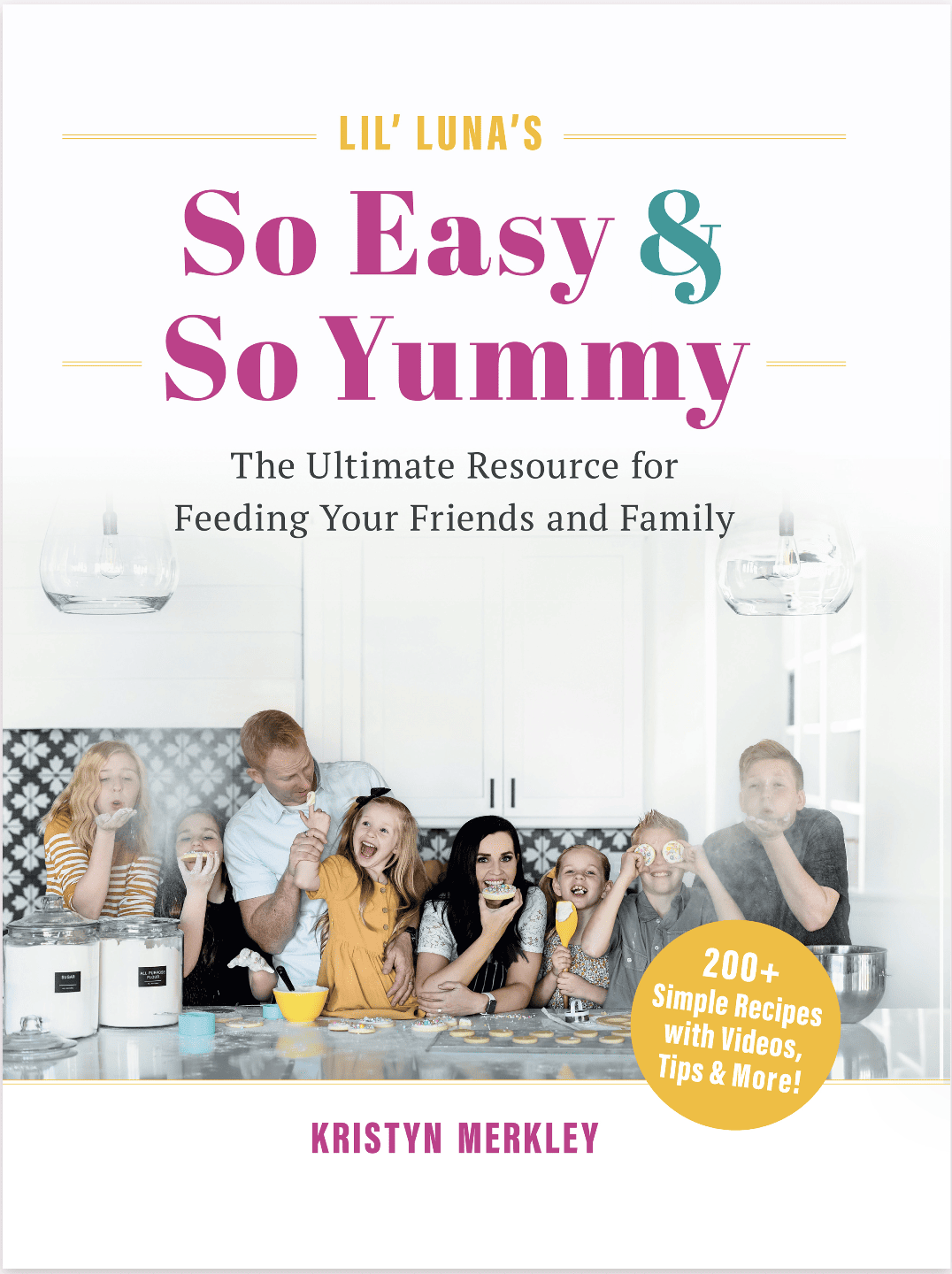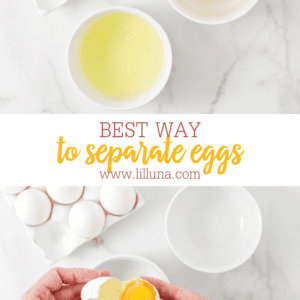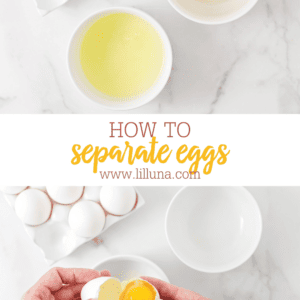This post may contain affiliate links. Please read our disclosure policy.
In cooking and baking, it’s good to know how to separate egg whites and we’ve got you covered – from our favorite method and beyond!
It’s important to know how to separate eggs for some of your favorite recipes like our Easy French Toast, Meringue Cookies, and famous Angel Food Cake.
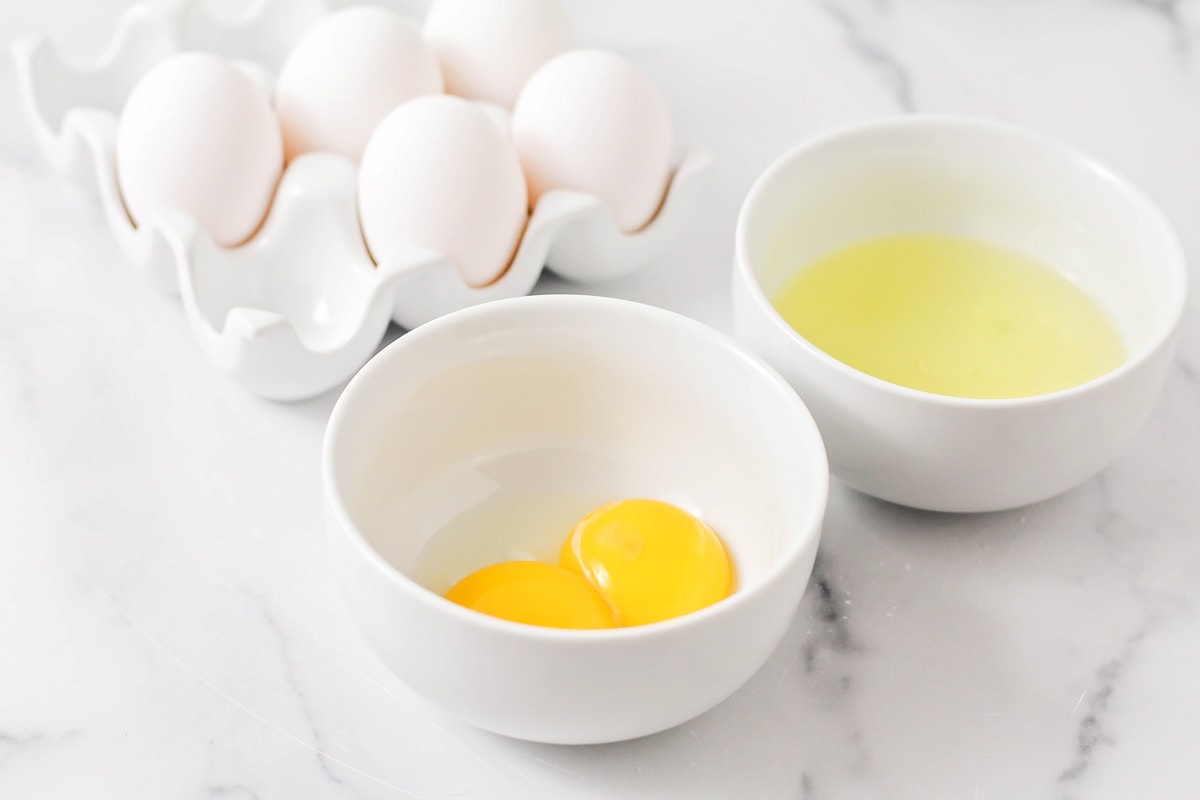
Why Separate Egg Whites?
Some dishes require the egg white and egg yolk to be separated from each other. The separation of egg whites and yolks in a recipe serves different purposes.
Separating the eggs allows for more control over how each element is used, ensuring that the recipe achieves the desired consistency and flavor.
- Egg whites are primarily used for their protein and can add structure and stability to dishes when whipped. They are commonly used in Meringues, soufflés, or Angel Food Cakes.
- On the other hand, egg yolks contain fat and are rich in flavor. They add richness, and moisture, and contribute to the texture of dishes like custards, sauces, and cakes.
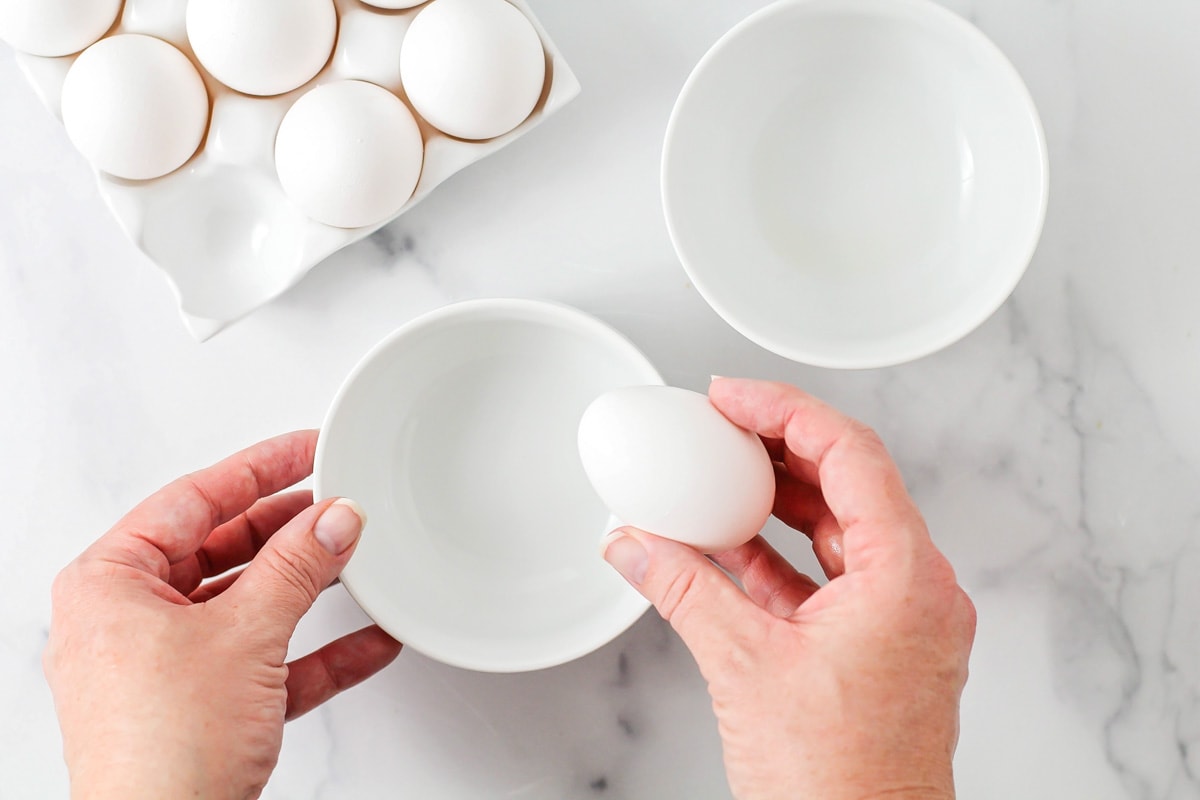
How to Separate Egg Whites
When separating yolks from eggs, we have a favorite method (no gadgets needed!), and in our opinion the best way to separate eggs!
CRACK an egg over one of the small bowls.
EGG WHITES. When you open the shell keep the egg yolk in one of the halves of the shell and allow the egg whites to drip into the bowl below.
TRANSFER the yolk to the other egg shell allowing the whites to drip out.
Continue transferring the egg yolk from one of the egg shell halves to the other, allowing the whites to drip out into the bowl below until only the yolk is left in the eggshell.
EGG YOLK. Pour the yolk into a separate bowl.

Separating Tips
It’s important to not mix the yolks and whites, these tips will help!
- Separate the raw eggs when they are cold to help keep the yolk intact.
- If the recipe calls for the eggs to be room temperature separate them when they are cold and then let them come to room temperature.
- If a piece of the shell gets into the bowl with the egg it can be tricky to remove with your fingers or spoon, but using a large piece of the shell to scoop it out works like a charm.
What happens if a little yolk gets in the egg whites? It’s always best to be cautious and try to keep the whites as yolk-free as possible. Even a small amount of yolk in the egg whites can affect the whipping process and prevent the whites from achieving maximum volume.
To be extra cautious, use several bowls to help keep clean egg whites separate from egg whites that may end up with a bit of yolk. Use one bowl to catch the egg whites as you separate the egg. If it is completely clean dump it into a second bowl.
If it gets egg yolk in it don’t discard it, dump it into a third bowl and use it to make Scrambled Eggs for breakfast.

Storing Info
Storing separated eggs. Some recipes require you to separate the egg whites and yolks, but then use both within the recipe. While other recipes only use egg white or egg yolks. This doesn’t mean that half the egg gets wasted.
- Egg whites can be stored in the fridge for up to 3 days. You can also add one egg white to each well of an ice cube tray and freeze. Once frozen store them together in a freezer bag. When a recipe calls for an egg white remove the needed amount and let them thaw.
- Egg yolks can be stored in an airtight container in the refrigerator for up to 2 days. They can sometimes form a thicker skin on top, but placing a piece of plastic wrap directly on top of the yolk will help keep that from happening.
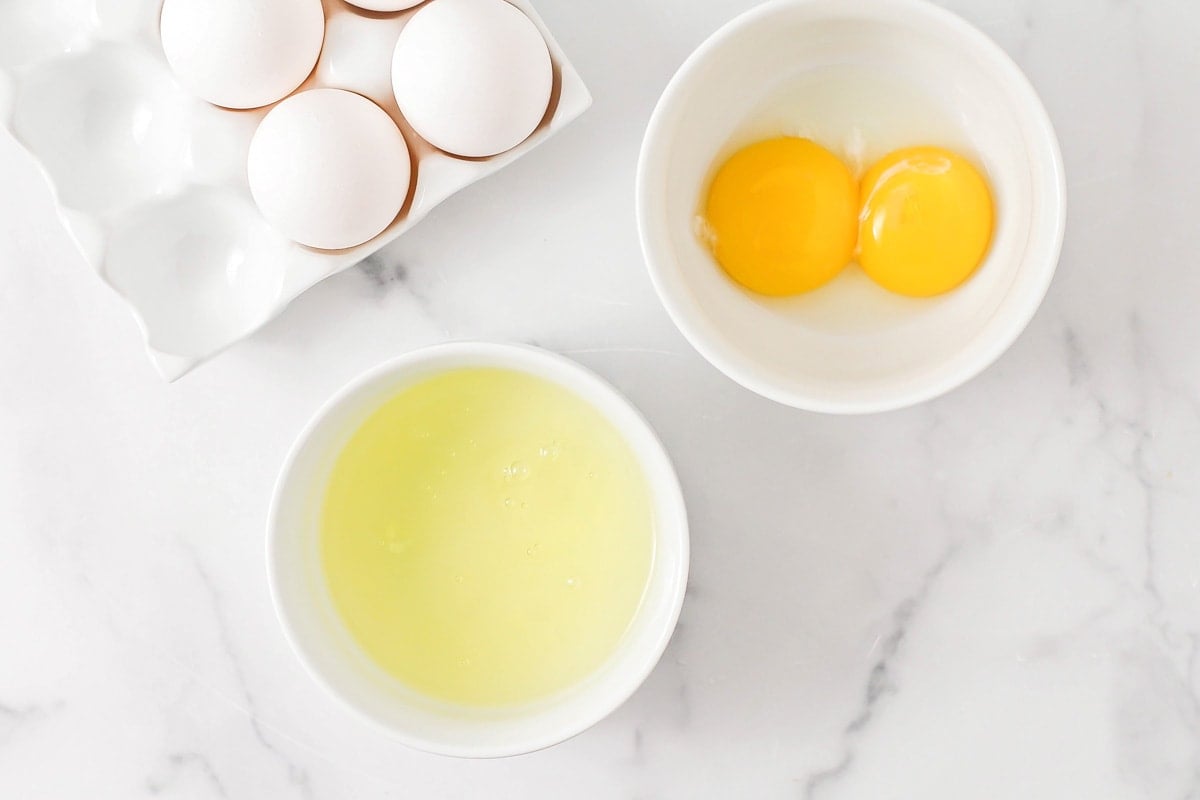
Additional Methods
There are other tricks you can use to separate eggs. Bakers and home cooks from all over have their preferences. My preferred method to separate egg yolk is to transfer the yolk back and forth between the shells and allow the whites to drip out. It doesn’t make a lot of mess and doesn’t require extra tools.
With that said, here are a few other ways you may like to try:
- Purchase a separating tool designed as an egg yolk separator.
- Hold your clean hand palm up with your finger slightly spread over a bowl. Crack the egg and pour it into your fingers. Let the whites drip down through your fingers while keeping the yolk in your hand. Aside from it being a bit messy, another drawback is that some of the oils in your hands may inadvertently get mixed in with the egg yolk, and can keep it from whipping up correctly.
- Place a plate on a flat surface and crack an egg open onto the plate. Using an empty water bottle squeeze just a bit of air out of it and place the opening onto the yolk. Gently release the pressure on the plastic bottle. The suction will cause the egg yolk to be drawn into the water bottle leaving the whites behind.
- Crack the egg over a slotted spoon and allow the whites to drip through the slots into a bowl below.
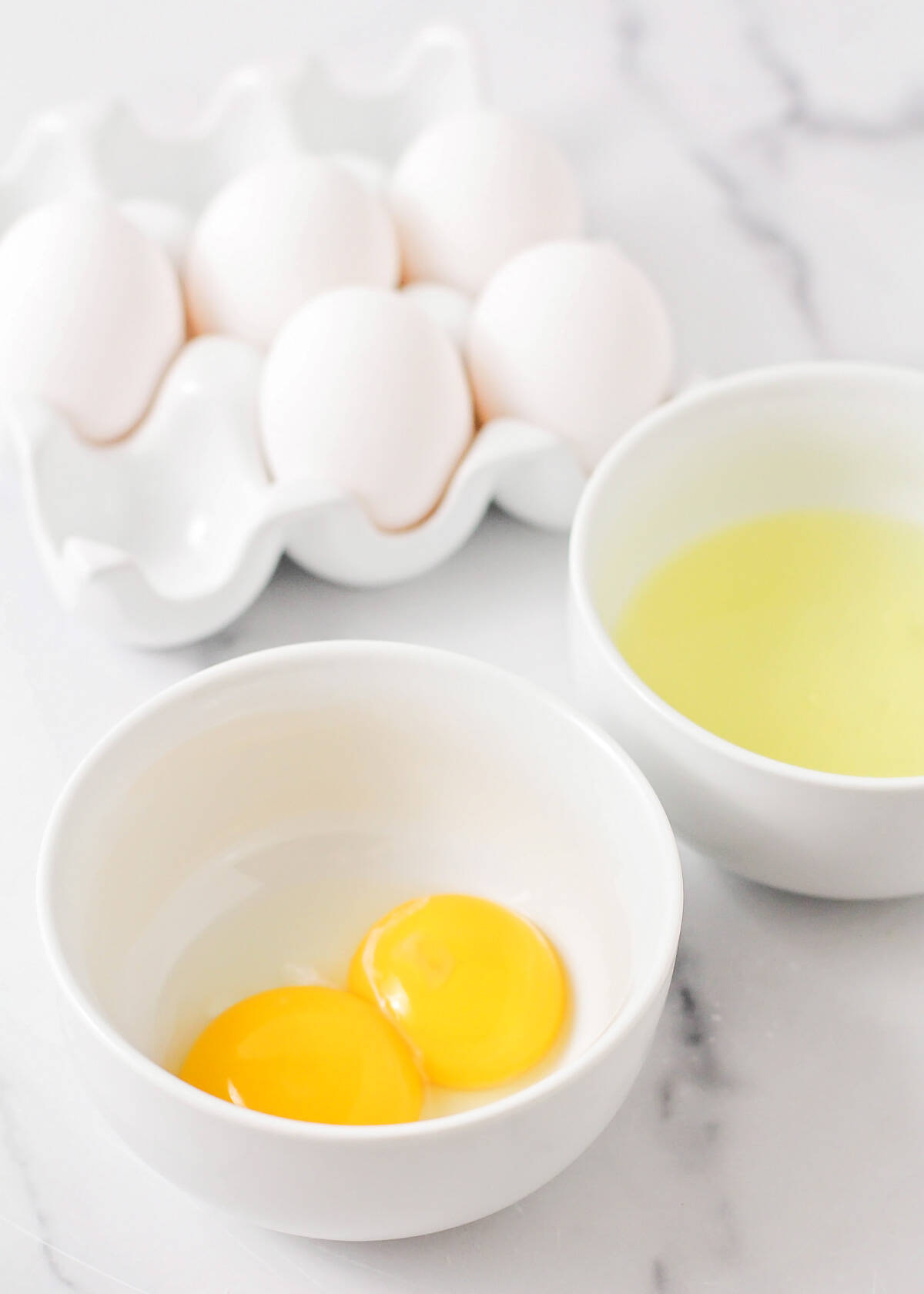
Recipe FAQ
There are many different egg-separating tools you can purchase, but I like using the shells. No extra tools or mess.
Whether the eggs are pasteurized eggs or not, from a chicken or other bird, you can separate the whites from the yolk.
Even a tiny amount of yolk can affect the whipping process and prevent the whites from achieving maximum volume. To avoid this, use a clean spoon or the edge of an eggshell to carefully remove the yolk from the whites. If a significant amount of yolk has already been mixed with the whites, it may be best to start with fresh eggs to achieve the desired results in your recipe.
For Recipes Using Separated Eggs, Check Out:
- Chiffon Cake
- Chocolate Mousse
- Boston Cream Pie
- Creme Brulee
- Eggnog
- Crispy Waffles
- Lemon Meringue Pie
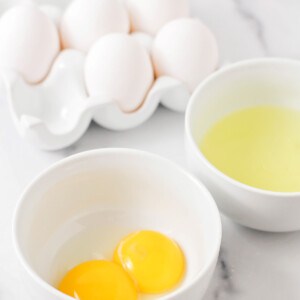
How to Separate Egg Whites
Ingredients
- 1 egg
Instructions
- Crack an egg over one of the bowls.
- When you open the shell keep the egg yolk in one of the halves of the shell and allow the egg whites to drip into the bowl below.
- Transfer the yolk to the other egg shell allowing the whites to drip out.
- Continue transferring the egg yolk from one shell to the other, allowing the whites to drip out into the bowl below until only the yolk is left in the eggshell.
- Pour the yolk into a separate bowl.
Video
Nutrition
Nutrition information is automatically calculated, so should only be used as an approximation.
